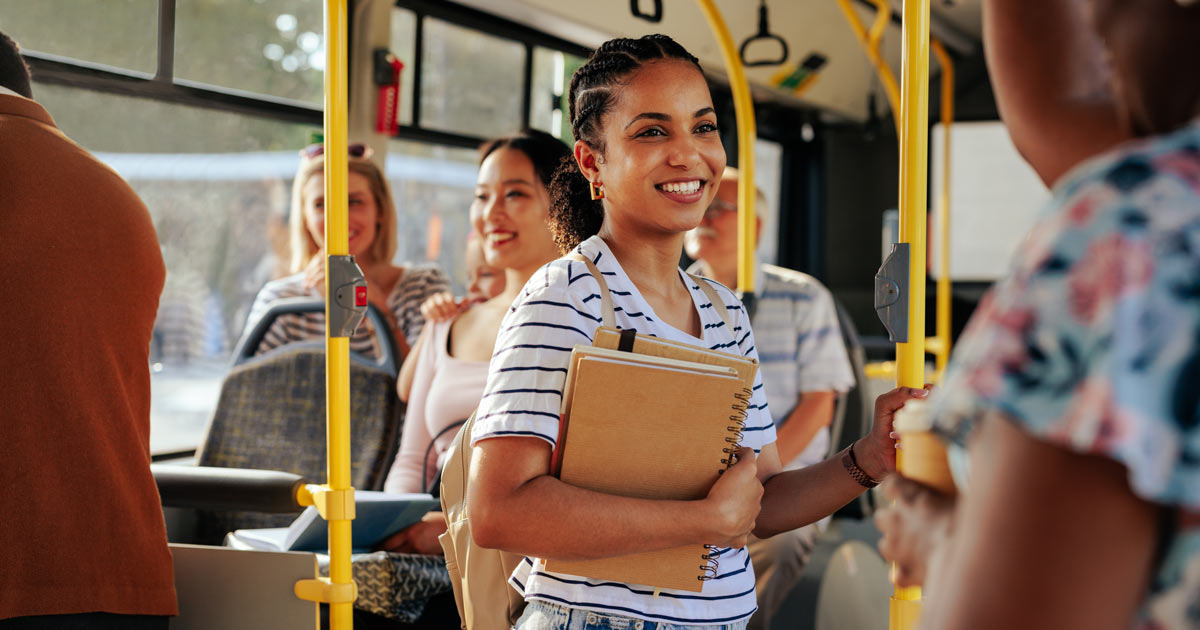It’s been nearly 60 years since Rosa Parks became the face of bus boycotts across the United States when she refused to move to the back of the bus in Montgomery, Ala. And while segregation on public transit was ultimately declared unconstitutional in 1956, public transportation is still not guaranteed to all Americans.
Equal access to public transportation can be impacted by where you live, how much you earn, and even your level of mobility. That’s why it’s important that Sunday, Feb. 4, on what would have been Rosa Parks’ 111th birthday and what is recognized as Transit Equity Day, we remind ourselves that no one should encounter barriers to getting where they want to go.
In that spirit, I want to offer three reasons why transit equity still matters today – and how CIRTA works to support transit equity.
1. Transit Ensures Access to Employment
Even after the Montgomery bus boycott led to the groundbreaking Supreme Court decision, Dr. Martin Luther King Jr. repeatedly stated there was more work to be done.
Equitable access to transit, Dr. King pointed out, could also guarantee access to better jobs for all people. “If transportation systems in American cities could be laid out so as to provide an opportunity for poor people to get to meaningful employment,” he said, “then they could begin to move into the mainstream of American life.”
Clearly, our nation still has more work to do on that front, and Central Indiana is no exception. A Brookings Institute study shows that only one-third of all jobs in metropolitan Indianapolis can be reached via transit in 90 minutes, and only 42% of working-age residents live near a transit stop (the national average is 69%).
The result is a city where owning a car is nearly imperative, especially when trying to reach a job outside Marion County. The problem is, when you consider that the cost of owning a car is typically about $12,000 a year and that roughly a third of Indianapolis households have a median income of less than $30,000, you see that owning a car is out of reach for many.
To ease some of these constraints, CIRTA operates Workforce Connectors, which run from downtown Indianapolis to industrial park employment opportunities in Hendricks and Boone counties. The commute times aren’t short, but the Connectors give workers access to higher-paying jobs in the suburban communities than they might find in the urban core.
2. Transit Supports Mobility Equity
Even if a community invests in public transportation options, that doesn’t automatically make it accessible for all individuals all the time.
For example, due to funding limitations, IndyGo buses don’t run late at night, when many service industry workers clock out. Plus, some bus stops don’t have sidewalks, much less accessible sidewalks, which means people using wheelchairs or strollers have difficulty getting to the stops.
Most notably, perhaps, for people in Central Indiana, federally funded public transportation is limited to traveling within counties, which means someone who needs to travel from a surrounding county into Marion County for a medical appointment, for example, would have to jump through a lot of hoops to use public transportation to cross county lines.
Fortunately, CIRTA’s County Connect program helps residents, especially seniors and people with disabilities, access transportation for equal opportunities and enhanced quality of life.
3. Transit Offers Access to a Greener Future
More than anything, transit means fewer cars on the road. Whether people are riding in buses, choosing rapid transit, or taking advantage of carpool or vanpool services, fewer of them are driving alone in their cars, and that means fewer carbon emissions are being pumped into the atmosphere. And that means a greener future for everyone.
Our Commuter Connect carpool and vanpool matching program supports this aim by helping Hoosiers find viable alternatives for their daily commutes, which not only reduces carbon emissions and air pollution but also saves them time and money.
Services like Commuter Connect, County Connect, and the Workforce Connectors – and other resources CIRTA and other Central Indiana transit providers offer – support transit equity by delivering a fundamental public good that benefits everyone, regardless of age, race, or class. In this way, they seek to embody Dr. King’s vision of transit as a civil right that delivers cascading economic effects for all.
Transit Equity Day was first established in 2017, and it’s gained more recent attention thanks in part to Indiana’s own U.S. Transportation Secretary Pete Buttigieg. Check out the video of him with Administrator of the Federal Transit Administration Nuria Fernandez talking about Rosa Parks and her bravery and the movement she ignited.


